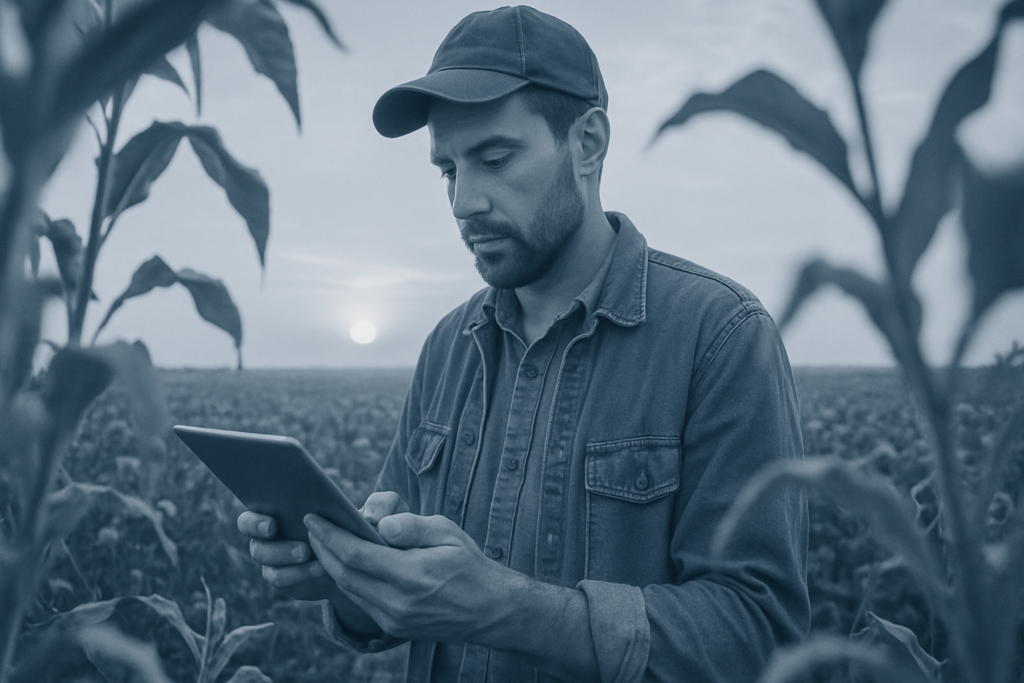Overview of Agribusiness Investments
Agribusiness investments cover a wide range of sectors, including crop production, livestock farming, and agricultural technology (agritech).
Investors find opportunities in these areas appealing due to the industry’s potential for growth and stability. Private equity firms, venture capitalists, and individual investors play key roles in financing these ventures, each looking for substantial returns in a vital global industry.
Key Investment Areas
Agribusiness investments primarily focus on several critical areas:
- Crop Production: Investing in crop production involves funds for seeds, fertilizers, machinery, and irrigation systems. Modern farming techniques, such as precision agriculture, improve efficiency and increase yields, making crop production a key area for investments.
- Livestock Farming: Investment in livestock farming includes financing for breeding, feeding, and healthcare for animals. Technological advancements, like automated feeding systems and health monitoring tools, enhance productivity and appeal to investors.
- Agricultural Technology (AgriTech): AgriTech investments fund the development of innovative tools and software aimed at improving farm management and efficiency. Examples include drones for crop monitoring, sensors for soil analysis, and data analytics platforms, all contributing to more informed decision-making in agriculture.
Investment Trends
Several prominent investment trends shape agribusiness:
- Sustainable Practices: Sustainable agriculture is seeing significant investment due to increasing demand for eco-friendly farming solutions. Funds target practices that reduce environmental impacts, such as organic farming and renewable energy usage.
- Vertical Farming: Vertical farming presents a novel approach to urban agriculture, attracting investments for its potential to produce high yields in small spaces. This method focuses on using vertically stacked layers and controlled environments to grow crops year-round.
- Precision Agriculture: Precision agriculture leverages technology to optimize field-level management regarding crop farming. Investments in GPS-guided tractors, variable rate technology, and automated irrigation systems support this trend.
Investment Returns
Agribusiness investments can offer impressive returns due to several factors:
- Market Demand: The growing global population fuels constant demand for food, ensuring a steady market for agribusiness products.
- Technological Advancements: Innovations in farming and livestock management boost productivity and efficiency, leading to higher returns for investors.
- Government Support: Many governments provide subsidies and incentives for sustainable and advanced farming practices, enhancing the profitability of agribusiness ventures.
Risks and Considerations
Despite the lucrative potential, agribusiness investments come with risks:
- Climate Change: Unpredictable weather patterns and adverse climate conditions can affect crop yields and livestock health, posing a risk to returns.
- Regulatory Changes: Changes in agricultural policies and regulations can impact investment outcomes, making it essential for investors to stay informed about potential shifts.
- Market Volatility: Fluctuating commodity prices and market demands can influence the profitability of agribusiness operations. Investors need to consider these factors when making investment decisions.
Agribusiness investments present a blend of opportunities and challenges. Recognizing key investment areas and trends, as well as understanding potential returns and associated risks, is crucial for making informed decisions in this dynamic sector.
Historical Investment Trends
Historical investment trends in agribusiness show a clear evolution from traditional farming to modern sustainable practices. Examining these trends helps understand where the industry is headed.
Early Agricultural Investments

Early agricultural investments focused primarily on land acquisition and basic farming tools. Investors purchased large tracts of land for crop production and livestock grazing, seeing agriculture as a fundamental economic activity. In the 19th century, innovations like the mechanical reaper revolutionized farming, attracting more capital.
Shift Towards Modernization
The late 20th century marked a significant shift towards modernization in agribusiness. Investors started focusing on advanced technologies and infrastructure improvements.
The green revolution brought high-yielding variety (HYV) seeds and synthetic fertilizers, enhancing productivity. In recent decades, there’s been an increasing trend towards precision agriculture and agriTech solutions like automated machinery and data analytics, driven by the need for efficiency and sustainability.
Current Investment Landscape
Investments in agribusiness are seeing significant interest from various sectors. Investors are drawn to the industry’s dynamic potential and evolving trends.
Key Players and Stakeholders
Major players include private equity firms and venture capitalists focusing on agricultural technology. Companies like Syngenta and Bayer invest heavily in crop protection and bioagriculture.
Agribusiness giants such as Cargill and Archer Daniels Midland drive innovations in food processing and distribution. Global organizations, including the World Bank and FAO, also fund sustainable farming initiatives. Stakeholders range from small-scale farmers to large agribusiness corporations, each playing a crucial role in the supply chain.
Emerging Markets
Emerging markets in Latin America, Africa, and Southeast Asia offer vast opportunities for agribusiness investments. Countries like Brazil and Argentina lead in soy and beef production.
Africa’s agricultural market is growing with a focus on enhancing food security and improving livelihoods. Southeast Asia, particularly Indonesia and Vietnam, sees investment in palm oil and aquaculture. These regions attract investors due to favorable climates, expanding arable land, and government policies supporting agricultural development.
Factors Driving Agribusiness Investments
Agribusiness investments stem from various factors that influence the decision-making process. Key elements include technological advancements, sustainability, and ethical farming.
Technological Advancements
Technological advancements revolutionize agribusiness and attract significant investment. Precision farming uses GPS technology, sensors, and drones to optimize crop production.
Examples include John Deere’s smart tractors and Blue River Technology’s weed control systems. Big data analytics and blockchain improve supply chain transparency and efficiency, crucial for modern agricultural practices. Investment in agtech, with firms like Monsanto and DowDuPont leading research, continues to grow.
Sustainability and Ethical Farming
Sustainability and ethical farming practices are critical in attracting investors focused on long-term returns. Sustainable agriculture minimizes environmental impact while maximizing productivity.
Techniques include crop rotation, organic farming, and water management. For instance, companies like Unilever and Nestlé support sustainable sourcing commitments. Ethical farming prioritizes animal welfare and fair labor practices, addressing consumer demand for ethical products. This focus boosts market value and investor appeal.
Investment Returns Analysis
Analyzing investment returns in agribusiness requires understanding both short-term gains and long-term benefits. Agribusiness investments vary, depending on trends, market conditions, and technological advancements.
Short-term Returns
Short-term returns in agribusiness often stem from meeting immediate market demands and leveraging technological innovations. For example, investing in precision farming tools like GPS-guided tractors can provide a quick boost to crop yields. According to a report by MarketsandMarkets, precision farming technologies can increase yields by up to 30%.
These immediate enhancements in operational efficiency lead to swift returns on investment. Additionally, the rapid adoption of drone technology for crop monitoring reduces labor costs and improves output quality, contributing to short-term profitability.
Long-term Returns
Long-term returns in agribusiness hinge on sustainability and commitment to continuous innovation. Investments in sustainable farming practices such as crop rotation, organic farming, and efficient water use positively impact long-term profitability. For instance, a study from the Food and Agriculture Organization (FAO) indicates that sustainable farming can reduce operating costs by up to 20% in the long run.
Moreover, investing in big data analytics and blockchain for supply chain transparency builds trust with consumers, leading to increased brand loyalty and sustained revenue. Major corporations like Unilever and Nestlé, focusing on long-term sustainability, have seen substantial gains in market share due to their ethical practices and innovations.
Risks and Challenges
Agribusiness investments come with a unique set of risks and challenges. Navigating these obstacles requires keen awareness and strategic planning.
Market Volatility
Market volatility significantly impacts agribusiness investments. Fluctuations in commodity prices like corn, soybeans, and wheat directly affect profitability.
Seasonal changes, weather patterns, and geopolitical events can cause sudden price shifts. Currency exchange rates further complicate matters, especially for international operations. For instance, a drought in a major grain-producing region can spike global prices but harm local farmers.
Regulatory Hurdles
Regulatory hurdles pose substantial challenges. Compliance with varying national and international regulations can be cumbersome. Environmental regulations often demand significant changes in farming practices, increasing operational costs.
For example, restrictions on chemical use necessitate investing in alternative pest control methods. Inconsistent policies between countries also disrupt trade, making market entry and expansion difficult. Keeping up-to-date with regulatory changes and ensuring adherence is crucial for sustainable operations.



